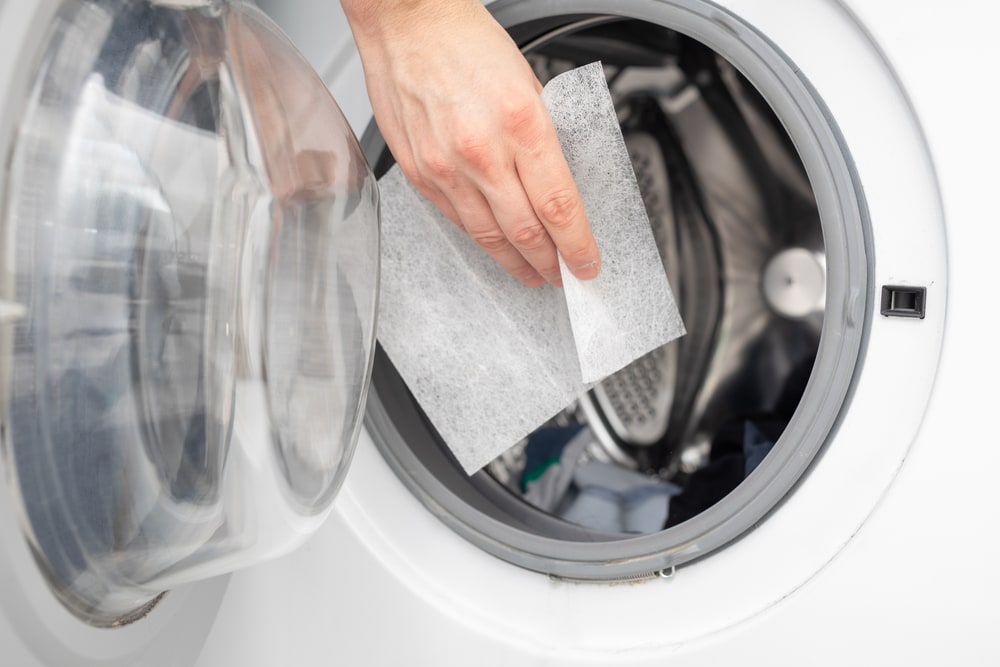Do Wool Dryer Balls Work? What You Need To Know
-
Brooke Bundy
- Last updated:

As the days get shorter, the static shock from the dryer grows stronger. No one likes the sudden spark of electricity popping their fingers as they separate freshly laundered towels. Thanks to wool dryer balls, you don’t have to accept static shock as an inevitable part of laundry day, even during the colder months. Dryer sheets do comparable work, but they aren’t as eco-friendly and pose a greater fire hazard than their wooly competition. Here’s everything you need to know about using wool dryer balls to see if they’re the best fit for your laundry routine.
Why Wool Dryer Balls Work
Have you ever noticed a dense load of clothes such as sheets or towels sometimes don’t dry as uniformly as a similarly sized batch of shirts and socks? You might unload the sheets to find that they’re still damp in the middle, which delays the next load and possibly your bedtime. Dryer balls counteract this issue by bouncing in between objects in the dryer, which helps them not to get so tangled. They also absorb some of the excess moisture. Both of these features can reduce your drying time by up to 25%.

Wool Dryer Balls vs. Dryer Sheets
If wool dryer balls are so effective, then you might wonder why everyone doesn’t use them. Perhaps there are some misconceptions on how they work. For example, tennis balls are obnoxiously loud in the dryer, so the mention of wool dryer balls may automatically discourage some people who prefer to keep laundry day as a quiet and peaceful affair. However, the soft wool absorbs much of the noise, so they’re not as loud as a rubber ball banging around.
Also, while wool dryer balls are the more hypoallergenic laundry option compared to dryer sheets, people who are allergic to wool may not think wool dryer balls are an option for them. However, the fibers from the dryer balls don’t shed on clothing. If they do, it’s time to replace them. Even people who are sensitive to wool consider them reasonably safe to use.

Wool dryer balls are the best option if you’re sensitive to heavily scented dryer sheets. They’re all-natural and fragrance-free, which is great for people with sensitive skin or families with small children. If you want to reduce your household waste and cut back on your electricity bill, these balls will be your best bet since they eliminate the need for single-use dryer sheets and also reduce drying time.
However, no cleaning solution is perfect.
Some people claim dryer sheets may be slightly more efficient at softening clothes. While this may be true, you can always use fabric softener or wash your clothes with vinegar for an extra softening effect that’s still safer for your allergies than dryer sheets.
Wool dryer balls also won’t give your laundry a refreshing scent like dryer sheets. Some online advice suggests adding a few drops of essential oils to your wool dryer balls to give them a scent. However, we do not recommend doing this because some essential oils are highly flammable. If you want to add a natural fragrance to your load, try adding essential oils to your detergent or using a scented formula instead.

Conclusion
While dryer sheets are a popular choice, wool dryer balls are the best option for individuals with allergies or aims to reduce their environmental impact. They can lower your electricity bill by reducing drying time by up to 25% and can be thrown into the dryer hundreds of times instead of being disposed of after a single use. We’re ready to throw off the static cling and give these laundry tools a try.
Featured Image Credit: Diana Will, Shutterstock
Contents

